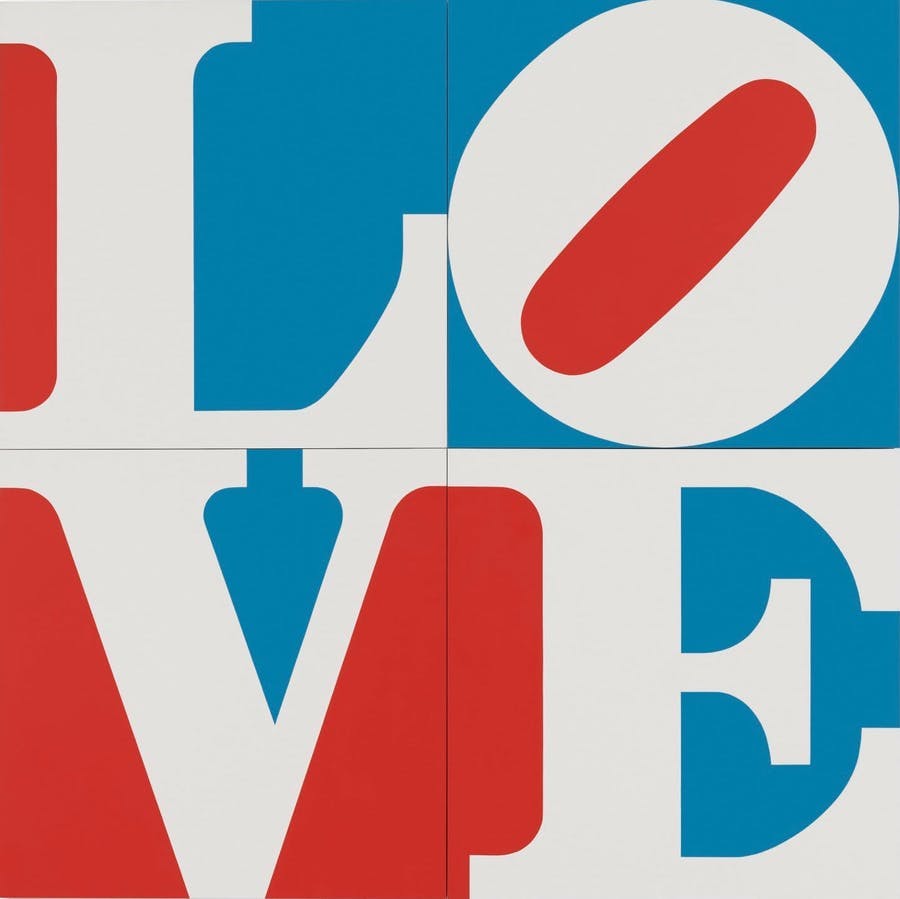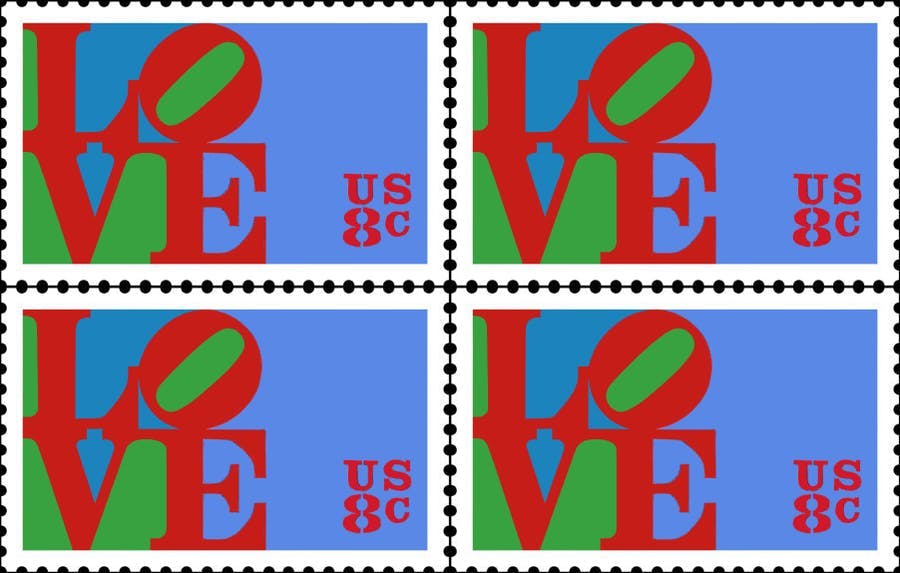The Story Behind Robert Indiana's "LOVE"
When Robert Indiana created "LOVE" in the 1960s, little did he know it would become one of the most famous symbols in pop culture.
The iconic LOVE design was the brainchild of Robert Indiana (1928-2018), an American artist and important exponent of Pop Art. Indiana, who also worked as a set and costume designer, discovered Pop Art at the age of 20 when he moved to New York.
Many are familiar with LOVE, but few know the name of its creator, let alone the story behind it. The concept of red letters with the slanted "O" originated in 1961, but the image did not become popular until 1965 after it was printed on greeting cards sold at MoMA.

The idea of"Love" goes back to a childhood memory of Indiana, who saw the phrase God is Love as the only decoration on the wall while visiting a Christian Scientist church. The original colors of red, green and blue paid homage to his father, who worked at a Phillips 66 gas station during the Great Depression. Little did Indiana know that the combination of the word and the colors, which to him had a personal meaning, would create an image that would become a universal symbol.
Related: The 10 Most Expensive Sculptures Sold at Auction
MoMA historian Deborah Wye has described the image as "full of erotic, religious, autobiographical and political roots" that make it "both accessible and complex in meaning."

The graphic design of LOVE is mainly thanks to Ellsworth Kelly who introduced Indiana to Hard Edge painting and worked with him for a while. "He [...] had a great influence on my work, and it's because of him that I'm here," Indiana once said.
The first sculptural version of LOVE was made in 1970 and subsequently exhibited at the Indianapolis Museum of Art. In 1973 the lettering appeared on an 8-cent postage stamp and thus was sent throughout the United States. Today, LOVE is reproduced (and translated) around the world and can be found on a wide variety of items, from carpets to skateboards. Many people are familiar with the LOVE graphic, even if they are not aware that it is a work of art.

Ironically, the tremendous success of this work did absolutely nothing financially for Robert Indiana. Since he never had the lettering protected as a trademark, he could not collect any license fees.
Related: Andy Warhol: The Pope of Pop
Indiana found it difficult to grapple with LOVE's sudden popularity, which dwarfed his other works. In spite of this, on the occasion of Barack Obama's 2008 campaign for president, Indiana presented a modified graphic of LOVE, for which he replaced the original four letters with HOPE. This new version was very well received by the public, who was already familiar with the graphics and colors, and it became a worldwide phenomenon.
Want to discover articles like this in your inbox? Then register today for our free newsletter !

The minimalist design, the strong colors and the universal message of LOVE are elements that have made the artist one of the leading representatives of Pop Art, even if he has always rejected this label himself. This was also the reason why he left New York in 1970 never to return there. He preferred to lead a largely self-sufficient life on an island off the coast of Maine, where he died at his home on May 19, 2018.
You can find more stories from the art world in Barnebys Magazine!


